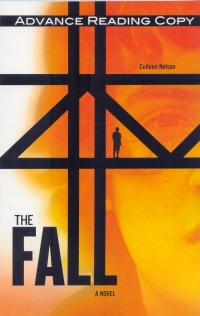| ________________
CM . . . . Volume XIX Number 35 . . . . May 10, 2013
excerpt:
In this gritty, urban story based on a true incident, 15-year-old Ben, an expert skateboarder, drifts into an association with the school's bad boys, Taz and Cory and Taz's younger brother, Luke. As they explore an off-limits construction site, four stories up, Luke is startled while crossing a girder and falls to his death. Their pain and grief throws the boys off balance. Cory, still reeling from the unresolved pain of his father's death, feels so guilty that he publically blames Ben who becomes vilified on Facebook and in school. Cory is sucked into gang life where he is accepted. Taz turns to alcohol and reignites his hatred toward his abusive father, leaving school and home. Ben is terrorized by guilt, crucified by his peers and angry with his absent father but is finally able to confront Cory and his father at Luke's funeral. This story is set in the grinding poverty of Winnipeg's inner city. The boys' fathers are dead, absent or abusive. The boys' mothers work exhausting dead-end jobs to keep their kids in clothes and fed. Anger fuels almost every exchange between parent and teen, as the true emotions – disappointment, distrust, love, fear, loss and pain – hover below the surface but can't be discussed because to do so for boys would be to lose face. The loyalty of Tessa and the unconditional love of his Greek "grandparents" soften Ben's life and are the basis of real hope for his future. Ben's aspiration to be a professional sponsored skateboarder reflects his cultural limits. He sees no use in applying himself at school, and, like many lower-class boys, he sees athleticism as a viable career choice. Taz's alcohol abuse and Cory's gang life accurately reflect real dangers for boys whose emotional lives are in tatters. Ben overcomes his timid demeanor with encouragement from his friend Tessa and the admiration of the skateboard store staff. He shelters his mother from his problems, thereby intensifying them and unwittingly inviting Cory to rob and destroy the restaurant of his Greek "grandparents". Even Ben has the macho 15-year-old boy's belief that he can manage on his own and doesn't need help. Cory's turbulent emotional pain over his father's death fuels his rage, and when his mother begins a new relationship, Cory cannot remain neutral or be happy for her. He turns his fury on both his mother and himself, destroying property and sinking into the depravity and criminality of gang life. Taz cannot connect with his father who abuses him verbally and physically. Alcohol takes the sting out of how he failed as a big brother, but he has to leave home and work as a window cleaner, sleeping on a friend's couch. Only at Luke's funeral does Taz's father show his true feelings and allow Taz to see his pain, which lets Taz re-connect with his parents. The sharp, up-to-date dialogue accurately reflects the way teenagers talk today. The teens text each other and use Facebook and YouTube. Ben's story is told in the first person as he is the centre of the story. His voice shows the reader his immediate gut reaction to the horrible situation in which he finds himself. By contrast, as the author goes back and forth among Ben, Cory and Taz, the other boys' stories are told in the third person so the other people around them (family, gang members) can be described in more even-handled detail. Intended readers will be drawn to the eye-catching cover of a stylized construction tower superimposed on a boy's face that glows orange. The theme of how grief is handled by men and boys permeates this novel and makes it a must-read for teachers and older teens, both boys and girls. The physical and emotional absence of men in the novel's demographic will raise many passionate discussions, but it is the boys' pain and grief that will engage students who will have strong opinions on the issues raised in this timely Canadian novel. Highly recommended. Joan Marshall is a Winnipeg, MB, bookseller.
To comment
on this title or this review, send mail to cm@umanitoba.ca.
Copyright © the Manitoba Library Association. Reproduction for personal
use is permitted only if this copyright notice is maintained. Any
other reproduction is prohibited without permission.
NEXT REVIEW |
TABLE OF CONTENTS FOR THIS ISSUE
- May 10, 2013.
AUTHORS |
TITLES |
MEDIA REVIEWS |
PROFILES |
BACK ISSUES |
SEARCH |
CMARCHIVE |
HOME |
